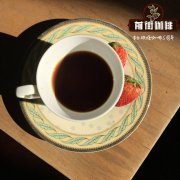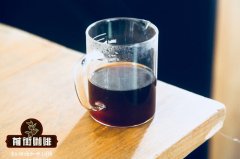Yegashefi Aman Oman Smallholder Godibe Single Farm Introduction Yegashefi Coffee Flavor

Professional coffee knowledge exchange more coffee bean information please follow the coffee workshop (Wechat official account cafe_style)
According to the Ethiopian decree, there are three coffee export systems.
(1) the largest private processing plant system that has been exported through ECX bidding.
(2) Cooperative system
(3) single farm system.
In these three systems, cooperatives and single estates can be exported directly without competitive bidding through ECX, which can be said to have completely reliable traceability / product curriculum vitae (traceability). However, if we get to the bottom of the matter, the cooperative is, after all, the centralized treatment of cherries harvested by small farmers, not 100% traceable. After all, a single farm is the only possibility of moving forward to the next generation. In fact, the single farm system has always existed in Ethiopia, but the proportion has not been high, and it has traditionally belonged to a large number of commercial batches that do not attach importance to quality. With Ethiopia's emergence in the third wave of boutique coffee in the past two or three decades, in addition to traditional coffee workers, Ethiopia has also gradually emerged a number of new talents influenced by Western culture, hoping to bring changes to this industry. in addition to traditional exporters have devoted themselves to producing areas, they have also attracted an upsurge of returning from Europe and the United States to their hometown.
The owner of the farm, Aman, was educated in the West and had complete experience in Western companies. What is even more amazing is that after returning to Ethiopia, he served as the Chief operating Officer (Chief Operation Officer) of ECX before setting up his own coffee production business. Based on the principle of neutrality in the official organization, he was unable to intervene in production or business during his tenure, and was finally able to realize his ambition after leaving his post. How important is the single farm system (which we temporarily call Single Farm Project, or SFP for short)?
We all know that Ethiopia is dominated by a smallholder system, but the smallholder system is impossible to achieve very important implementation concepts such as full traceability, single variety batches, special treatment batches, customized batches and so on. Single farm is the only answer to all these questions. The site selected by Aman is located in what can be said to be the quintessence of the generalized Yegashefi region, that is, the Gedeb area (if it is classified according to the producing area of ECX, it belongs to Cochelle Kochere).
Gedeb is located in the southeast corner of Yejasuefi, about 50 kilometers south from the town of Yejia Xuefei, and 2030 meters above sea level from 1850m to the treatment plant, which can be said to be the highest area of the whole Yejasuefei. Coffee people often refer to this area as Gedeb, mainly because the largest town center in the area is named after Gedeb, which goes further east at the left corner of the town, about a 15-minute drive to the destination. At this point, it can be said that we have reached the most far-reaching zone, and we will arrive at Worka in less than ten minutes.
As the SCAA slogan says, "Because great coffee doesn't just happen".
Harvesting and selecting fully ripe bright red cherries is already the most basic (let us remind you that this is very difficult to achieve in Ethiopia, which is dominated by a smallholder system, and generally can only rely on hand-picked work on the scaffolding). The sun treatment here uses the most stringent and exquisite work, so the cherries on the scaffolding are only one layer thick, and the drying schedule is strictly controlled at about 18 days, so we gave him a simple name (SLD-Single Layer Drying/Slow Drying). The single-layer stack provides the most perfect convection and dry environment for coffee cherries, which is well known, but it is the most space-consuming and unfavorable mode of production. Proper slow drying can properly develop the best water activity of coffee cherries during the drying process, which not only develops the flavor better, but also allows the storage of raw beans to last longer in the production season, but this way prolongs the time required for each batch of production.
It is also worth noting that the farm warehouse has a batch management system rarely seen in Ethiopia. Each bag of shell beans has a batch management system that can be traced back to a specific harvest date, treatment date, drying process and scaffolding number.
Qianjie recommended cooking parameters:
Hand punch: V60 filter cup small Fuji R440 grinding 3.5, water temperature about 90 degrees
The recommended grinding degree of normal pressure is 4 and the water temperature is 90 ℃.
The recommended siphon grinding degree is 4, and the water temperature is 90 ℃ ~ 91 ℃.
The pressure grinding degree of Philharmonic is recommended to be 3.5, and the water temperature is 90 ℃.
Important Notice :
前街咖啡 FrontStreet Coffee has moved to new addredd:
FrontStreet Coffee Address: 315,Donghua East Road,GuangZhou
Tel:020 38364473
- Prev

Yega Sheffield Ashasha Farm introduces Yega Coffee Coffee Flavor
For more information on coffee beans, please follow the coffee workshop (Wechat official account cafe_style) the Gedeb area is located in the south of Yegashafi. Gedeb is also the name of the processing plant in this area, which is responsible for collecting and drying raw coffee beans on elevated beds. The Gedeb processing plant, which has about 700 local coffee farmers, will send raw coffee beans to the plant for drying.
- Next

Sidamo Guji Mormora Farm (Devil Farm) introduction to the flavor of Sidamo coffee
Professional coffee knowledge exchange more coffee bean information please follow the coffee workshop (Wechat official account cafe_style) the Guji producing area of southern Ethiopia is adjacent to the Sidamo and Gedeo areas, the territory is straddled by towering mountains, highlands, plateaus, valleys and plains, with diverse topography. The geology of this area belongs to volcanic soil with rich nutrients and good drainage.
Related
- Does Rose Summer choose Blue, Green or Red? Detailed explanation of Rose Summer Coffee plots and Classification in Panamanian Jade Manor
- What is the difference between the origin, producing area, processing plant, cooperative and manor of coffee beans?
- How fine does the espresso powder fit? how to grind the espresso?
- Sca coffee roasting degree color card coffee roasting degree 8 roasting color values what do you mean?
- The practice of lattes: how to make lattes at home
- Introduction to Indonesian Fine Coffee beans-- Java Coffee producing area of Indonesian Arabica Coffee
- How much will the flavor of light and medium roasted rose summer be expressed? What baking level is rose summer suitable for?
- Introduction to the characteristics of washing, sun-drying or wet-planing coffee commonly used in Mantenin, Indonesia
- Price characteristics of Arabica Coffee Bean Starbucks introduction to Manning Coffee Bean Taste producing area Variety Manor
- What is the authentic Yega flavor? What are the flavor characteristics of the really excellent Yejasuffi coffee beans?

